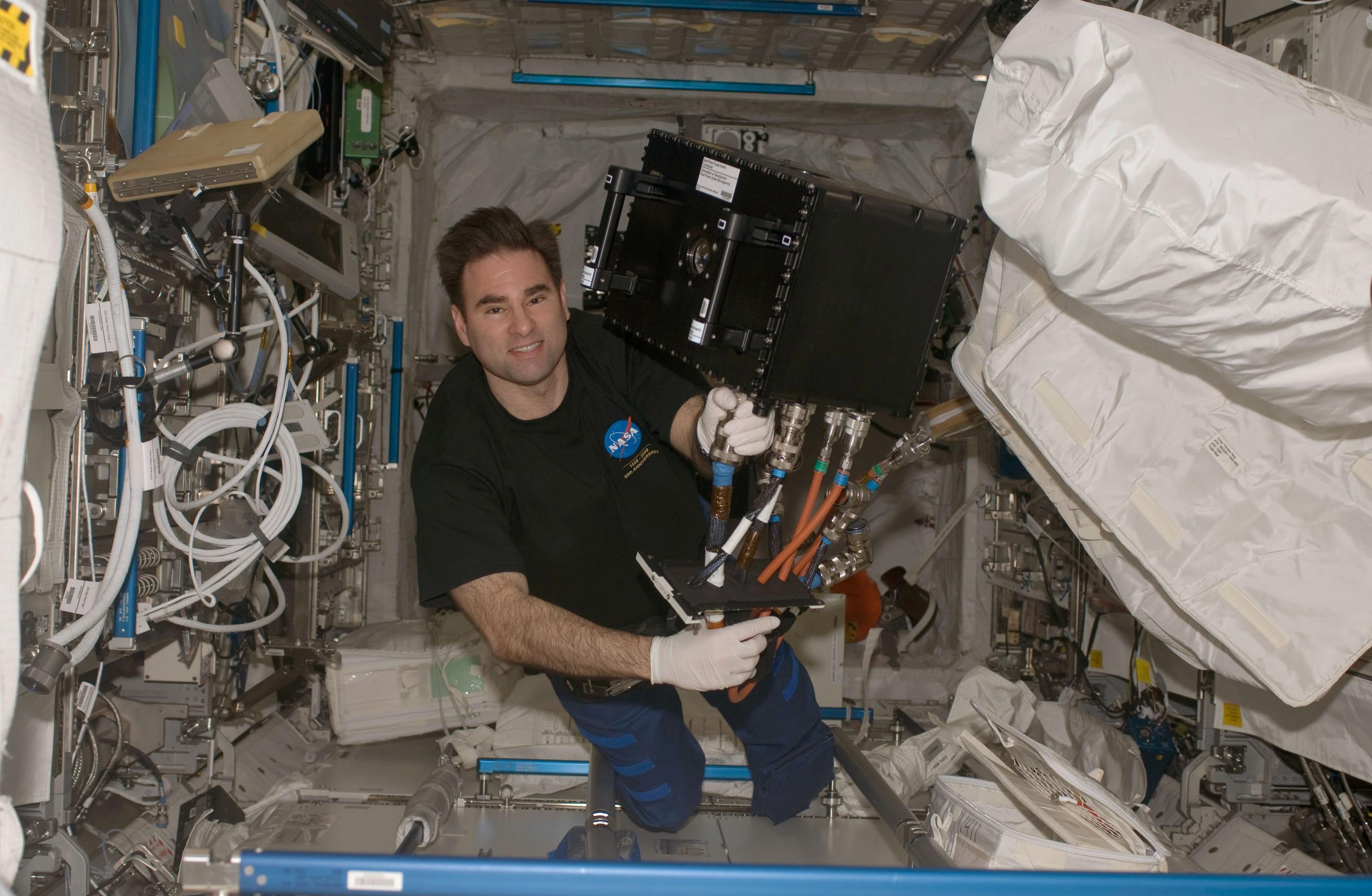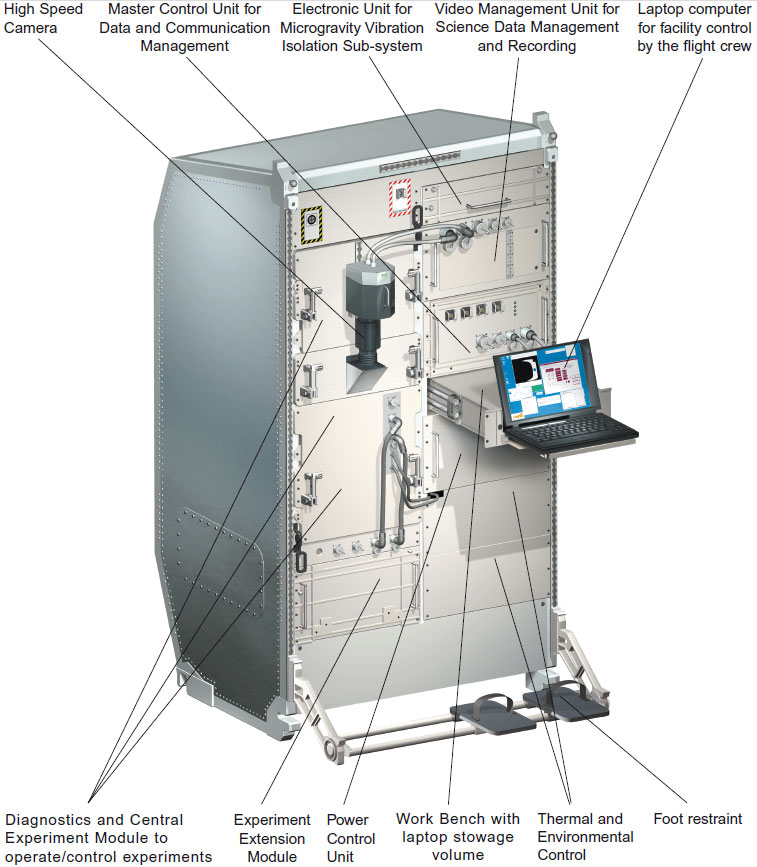Fluid Science Laboratory
Source: NASA
The Fluid Science Laboratory (FSL) is a European (ESA’s) science payload housed in the Columbus laboratory. The Fluid Science Laboratory fully occupies an International Standard Payload Rack.
The Facility Core Element consists of the Optical Diagnostic Module and Central Experiment Module into which the Experiment Containers are sequentially inserted for operation.
The Optical Diagnostics Module houses the equipment for visual and interferometric observation, the related control electronics, and the attachment interfaces for Front Mounted Cameras. The Central Experiment Module is divided into two parts:
- The first part contains the suspension structure for the Experiment Containers, including all the functional interfaces and optical equipment, and is designed to be pulled out from the rack to allow insertion and removal of the Experiment Container.
- The second part contains all the diagnostic and illumination equipment and its control electronics to command and monitor the electromechanical and optomechanical components.
The Facility Core Element is complemented by the functional sub-systems for power distribution, environmental conditioning and data processing and management.
For observation of experiments the FSL includes:
- Two-axis visual observation with electronic imaging and photographic back-up via Front Mounted.
- Cameras which provide high speed imaging together with high resolution and colour recording.
- Background, sheet and volume illumination with white light and monochromatic (laser) light sources.
- Particle image velocimetry, including liquid crystal tracers for simultaneous velocimetry and thermometry.
- Termographic (infrared) mapping of free liquid surfaces.
- Interferometric observation in two axes by convertible interferometers with active alignment.
- Digital Holographic, Wollaston/shearing and Electronic Speckle Patter interferometer
- Schlieren mode combined with shearing mode.
E-USOC is the Facility Support Centre (FSC) for the Fluid Sciece Laboratory, and its main task is to remotely operate the several Payloads installed in the Experiment Containers (e.g. GeoFlow). The individual sciece team members may monitor the processing of their experiments from their User Home Bases.
Source: ESA

